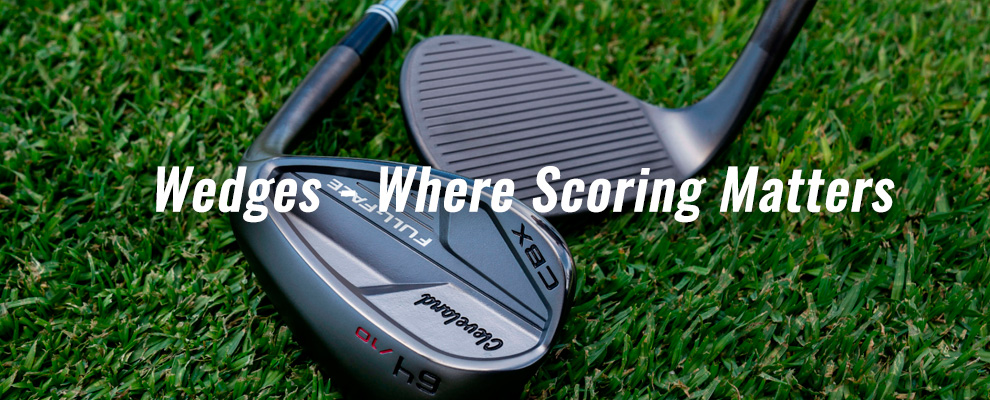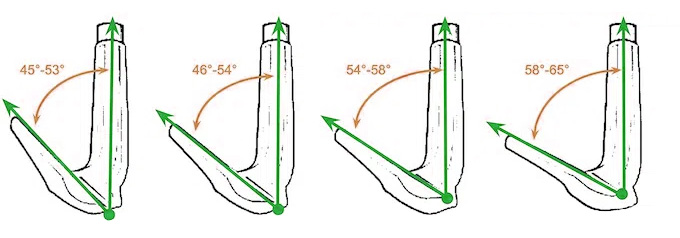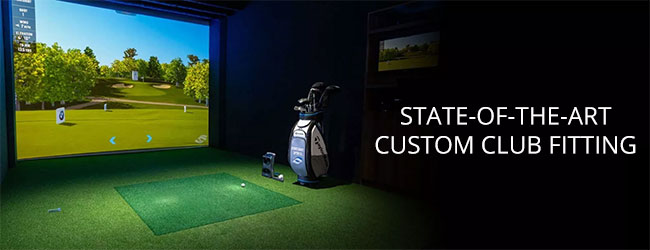
If you’re new to the game of golf or just looking to upgrade your wedges, GolfOnline is here to help you sort out your loft, bounce and grind questions. Below you will find all you need to know before making your next golf wedge purchase.
The Basics
Golf wedges are what golfers use to successfully navigate around the greens and out of bunkers. These shorter approach shots require maximum control, so choosing the right wedge could mean the difference between making par or a dreaded bogey.
“After all these years, it’s still embarrassing for me to play on the American golf tour. Like the time I asked my caddie for a sand wedge and he came back ten minutes later with a ham on rye.” – Chi Chi Rodriguez
Understanding Loft
The loft on your golf wedge simply refers to the angle at which the club face lies in relation to the shaft. In wedges, lofts range from 44º - 64º and it’s recommended that you don’t have too many gaps in loft between your lowest lofted iron and your first wedge (experts recommend no more than 4º between your wedge lofts). Explore the loft options available in wedges below.
 Pitching Wedge (44/46/48)
Pitching Wedge (44/46/48)
This is the lowest loft after your 9-iron, therefore a pitching wedge is often sold with iron sets. It’s a great club to use for chipping around the green and longer approach shots.
Dual/Utility Wedge (49)
A dual wedge can be used for a variety of different shots. These “dual purpose” clubs usually have a similar length and loft as a gap wedge.
Gap/Approach Wedge (50/52)
Gap wedges do exactly what they say on the tin – fill in the gaps between your sand wedge and your pitching wedge.
Sand Wedge (54/56)
This high-lofted club is perfect for getting out of bunkers but also useful for chipping, pitching and hitting high approach shots onto the green. Its high bounce qualities allow the club to glide through the sand at just the right level to take enough sand to get under the ball but not too much to dig in too far.
Lob Wedge (58/60/64)
The highest loft wedges are great for “flop shots.” Not sure what that is? Check out Phil Mickelson’s masterclass…
“Bounce is your friend” – Bob Vokey
When we talk about wedge bounce, we’re talking about the angle created between the leading edge of the club and the lowest point of the sole. It’s basically the area of the club that hits through the ground during ball contact.
Master wedge craftsman, Bob Vokey often says “bounce is your friend,” because it allows for forgiveness on all wedge shots. Having the correct wedge bounce and grind (more on that below) combination will help to establish optimal contact, control and ball spin.
Low (4º - 6º)
Ideal for firm turf conditions and harder bunkers. Designed for clean ball contact and precision in your short game. Favoured by the pros for better shot-making capabilities.
Mid (7º - 10º)
Ideal for most golfers who are playing on firm to normal turf. These can be used on a variety of courses and conditions. Provides great distance and trajectory control.
High (10º+)
Ideal for softer turf, fluffy lies and bunkers with softer sand. A wedge with a high bounce will generate a lot of spin. Can be beneficial for golfers who tend to produce divots as it’s less likely to dig in through impact.
Sole Grinds
Sole grinds simply refer to a manipulation of the sole of a wedge, removing material (usually from the heel or toe) to alter the way the club face interacts with the turf. Depending on where the material is removed from, different sole grinds can help different swings. Beyond a player’s swing, course conditions can also play a factor in grind selection.
Here Titleist staff member James Sieckmann walks you through different bounce and sole options, using the Titleist SM8 Wedges.
Grooves
The grooves on the face of your golf wedge act like tread grips on your tyres. Cut into the club head face, wedge grooves help to create friction with the golf ball, generating spin and trajectory around the greens as well as helping to improve short game control. The best golf club manufacturers are always working on ways to improve groove technology, whilst making sure their designs conform to USGA and R&A regulations.
As your grooves wear out over time, this can decrease spin. It is important to keep wedge grooves clean of any dirt and debris. Using a golf towel in between shots and rounds to clean your wedges is a great idea. Groove blades and brushes can also be used to remove small indentations and wear from grooves.
According to the Titleist Vokey R&D team, a new wedge can spin up to 2,000 RPM more than a wedge played for 125+ rounds. It will also launch lower and has less than half the roll out of a wedge played 125 rounds.
 Finishes
Finishes
In today’s modern game, cutting edge design and aesthetics reign supreme. Golf wedges are now being created with a variety of finish options beyond the standard chrome. From black to bronze, nickel and raw, the finish you choose will mostly come down to personal preference. Many prefer a darker colour that won’t reflect the sun. Raw finishes naturally rust over time and it is said this produces more spin and a softer feel.

Custom Fit
Still unsure which golf wedges are best for your game? We always recommend that the best way to ensure your golf clubs match your swing is to get custom fit. At GolfOnline our shop pros are trained to help you discover all the nuances of your game. Let them walk you through the best loft, bounce and grind options to help you achieve lower scores on the golf course. Book in your session today!